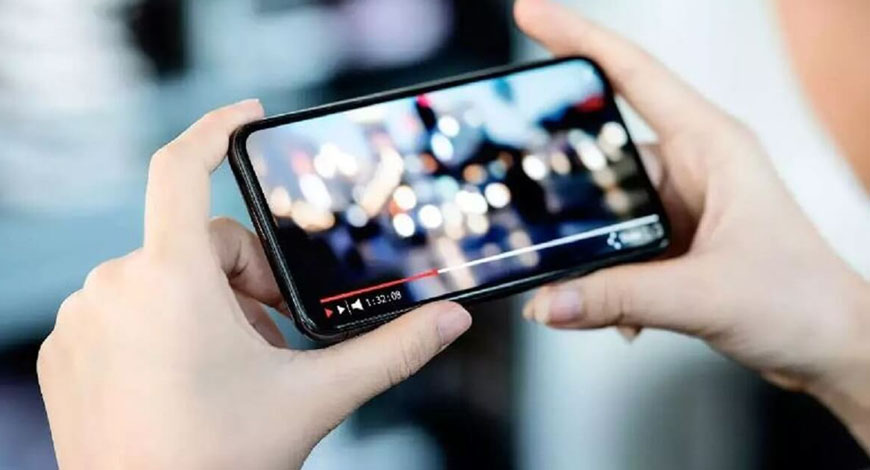Headlines Of The Day
TEC recommends FM radio & live streaming model for D2M technology

Just like FM radio functionality in mobile phones coexisting with live streaming of content, the Telecommunication Engineering Centre (TEC) has recommended a similar model for direct-to-mobile (D2M) technology keeping in view consumer preferences.
In its final report on the subject of direct broadcasting to mobile devices, TEC said the adoption of Digital Terrestrial Transmission to Mobile (DTT2M) or D2M technologies like 5G broadcast, ATSC 3.0, among others, will depend on the consumer choice, just like the current status of FM radio reception on mobile phones.
While many phones no longer come equipped with FM radio functionality, consumers still have the option to select phones with this capability. Similarly, TEC said, “driven by market forces, the mobile handset market may see multiple products supporting DTT2M reception alongside those without this feature…ultimately, consumers will have the final say, making decisions based on individual preferences and experiences”.
5G broadcast refers to a dedicated broadcast-only network that operates independently of cellular networks.
Once implemented, D2M services would pave the way for streaming television and video content directly to mobile phones, without an Internet connection. Consumers will get to choose between internet streaming and D2M for viewing live television on their mobile handsets.
The final report on the subject from TEC, which is the technical arm of the Department of Telecommunications (DoT) has come at a time when device manufacturers and telecom operators have expressed concerns over the implementation of the D2M technology. According to smartphone and chip makers, the same would increase the price of the smartphones as it would require additional chips or dongles to be inserted into smartphones.
Telecom operators, on the other hand, flagged concern over potential loss of revenues from the data business, in case the mobile picks up signals from the D2M technology in use. Besides, D2M technology would also require reserving the spectrum in the band of 470-582 MHz, to which telcos have objected. One of the other arguments with regard to the introduction of D2M was also to reduce load owing to increasing content consumption on telcos’ networks.
Currently, video traffic constitutes 60-70% of mobile network traffic. According to telcos, 5G networks have sufficient capacity to handle video traffic as the present utilisation averages around 15% only.
“From a policy standpoint, DTT2M services will directly compete with terrestrial mobile services, as a significant portion of the live television streaming data traffic currently managed by Telecom Service Providers (TSPs) may shift to DTT2M services,” TEC noted.
In its report, TEC did not mention whether the service should be made mandatory on phones or not.
“Ensuring compatibility with existing handsets is essential for cost-effectiveness and market acceptance. Challenges include network integration and competition with terrestrial mobile services. Ultimately, consumer choice will be pivotal in adoption,” TEC said.
Currently, there are no commercially available mobile handsets for any of such broadcasting technologies or standards worldwide.
With regard to concern over hardware changes in devices to support D2M, the TEC report also mentioned a standard on Converged Gateway Node, which enables delivery of live as well as on-demand content to existing handsets without requiring any special hardware or installation of any app.
The government is currently doing a pilot project of the D2M technology in 19 cities, with Tejas Networks-owned wireless communication and semiconductor solutions company Saankhya Labs. Saankhya Labs has designed the chips and dongles to implement D2M solutions in phones.
The government expects the D2M technology to find a market in India as currently there are 800 million smartphone users in the country and 69% of content accessed by these users is in the video format. Further, the D2M technology would also help the government reach nearly 80-90 million ‘TV Dark’ homes across the country, Apurva Chandra, former secretary, information and broadcasting (I&B) ministry had said in January.
TEC is also expected to conduct further studies to analyse actual deployment scenarios of D2M, coexistence with other wireless services, spectrum requirements, commercial viability, and business opportunities. In the report, it said, future research may consider addressing challenges such as content quality, security, in-device coexistence, and mobile battery consumption in these technologies.
Earlier too, direct reception of live television channels on mobile handsets was possible to a limited extent through the digital terrestrial broadcasting of a few Doordarshan channels in 19 cities using DVB-T2 (Digital Video Broadcasting – Terrestrial 2) technology. The technology required existing mobile handsets to use an external dongle and the installation of an app, to view live TV.
However, the service was shut down in 2022 owing to 4G services and the subsequent 5G launch, as the subscribers migrated to view OTT content on smartphones, without the need for an external dongle. Financial Express






